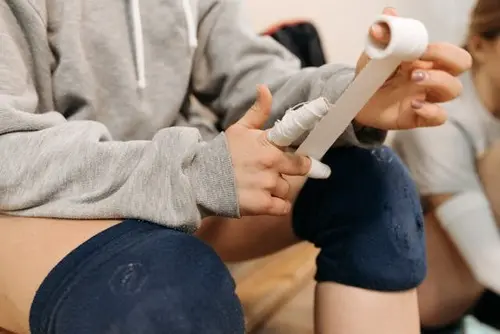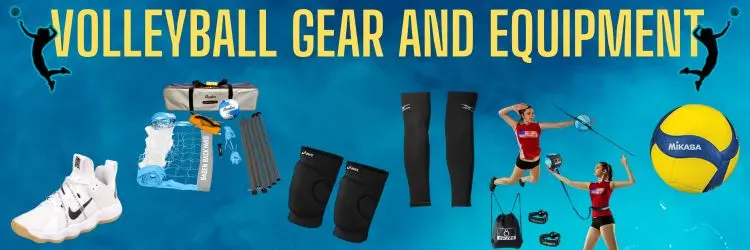History of Volleyball Training Methods

The History of Volleyball Training Methods: The Evolution
Volleyball, invented in 1895 by William G. Morgan in Holyoke, Massachusetts, was initially conceived as a relaxed alternative to basketball. As the sport gained popularity worldwide, its competitive nature demanded a greater emphasis on fitness, strategy and skill.
Over the decades, volleyball training methods have evolved dramatically, reflecting advancements in sports science, technology and the growing demands of the game. This article explores the transformation of volleyball training techniques from the early 20th century to today, highlighting key innovations and their impact on players and teams.
Early Training Methods: Laying the Foundation (1900s–1940s)
In the early 20th century, volleyball was played primarily as a recreational activity. Training was rudimentary, focusing on the basics of the game, such as passing, serving and setting. Players honed their skills through repetitive drills without a structured approach to conditioning or strategy.
Skill Based Training:
- Early training centered on mastering fundamental skills like the underhand serve and basic bump pass.
- Coaches often emphasized repetition, with players performing the same action repeatedly to build muscle memory.
Limited Physical Conditioning:
- Volleyball was not physically demanding compared to sports like football or basketball, so physical conditioning was minimal.
- Players engaged in general physical activities such as running or calisthenics, but these were not tailored to the sport’s specific needs.
Tactical Simplicity:
- Early volleyball tactics were simple. Training sessions focused more on teamwork and coordination rather than complex strategies.
- The six player rotation system, a staple of modern volleyball, was still in its infancy.
Post War Era: The Rise of Structured Training (1950s–1960s)
The 1950s and 1960s marked volleyball’s transition from a recreational pastime to a competitive sport, particularly with its inclusion in the Olympic Games in 1964. This period witnessed a shift towards structured training regimens.
Introduction of Specialized Skills:
- Coaches began to differentiate between players’ roles, such as setters, attackers and blockers. Training sessions tailored drills to develop these specialized skills.
- Techniques like the jump serve and spike gained popularity, demanding more rigorous training methods.
Incorporation of Fitness Training:
- Physical fitness became an integral part of volleyball training. Coaches introduced weightlifting, plyometrics and agility drills to enhance players’ strength and explosiveness.
- Training for vertical jumps became a priority, as spiking and blocking were critical aspects of the evolving game.
Tactical Advancements:
Teams adopted more sophisticated offensive and defensive strategies. Training sessions included simulations of game scenarios, fostering quick decision making and adaptability.
Influence of Technology:
Coaches used film recordings to analyze players’ performance and opponents’ strategies. This was a precursor to the modern use of video analysis in sports training.
Golden Era of Modernization (1970s–1980s)
During the 1970s and 1980s, volleyball training methods underwent significant modernization, influenced by the sport’s global growth and the increasing competitiveness of international tournaments.
Scientific Approach to Training:
- Sports science played a pivotal role in shaping training methods. Coaches collaborated with physiologists and biomechanists to optimize players’ performance and minimize injuries.
- Nutrition and hydration became key focus areas, ensuring players maintained peak physical condition.
High Intensity Drills:
- Training sessions became more intense, with an emphasis on simulating the fast paced nature of matches.
- Interval training and circuit training were introduced to improve endurance and agility.
Role of Specialized Positions:
The introduction of the libero position in the late 1980s revolutionized defensive training. Liberos focused on honing their digging and passing skills, while attackers and blockers emphasized vertical jump and power.
Team Chemistry and Communication:
Coaches recognized the importance of teamwork and communication. Training drills included exercises that fostered trust and coordination among players.
The Technological Revolution (1990s–2000s)
The 1990s and 2000s marked a technological revolution in sports, with volleyball training methods benefiting immensely from new tools and technologies.
Video Analysis and Analytics:
- Advanced video analysis software allowed coaches to dissect every aspect of a match, from individual player movements to team strategies.
- Statistical analysis provided insights into players’ strengths and weaknesses, enabling targeted training.
Innovative Equipment:
- Training aids like jump trainers, resistance bands and volleyball specific machines became commonplace.
- Automated serving machines helped players practice receiving high velocity serves, improving reaction times.
Customized Conditioning Programs:
- Strength and conditioning programs became highly individualized, tailored to each player’s position and physical attributes.
- Focus areas included core stability, shoulder mobility and explosive power.
Mental Training:
- Psychological training gained prominence, emphasizing focus, resilience and confidence under pressure.
- Visualization and mindfulness techniques were integrated into regular practice routines.
Contemporary Training Methods: Pushing the Limits (2010s–Present)
The last decade has seen volleyball training methods reach new heights, driven by advancements in sports science, data analytics and global competition.
Sports Science Integration:
- Wearable technology, such as heart rate monitors and GPS trackers, provides real time data on players’ performance and workload.
- Coaches use this data to prevent overtraining and optimize recovery.
Focus on Functional Training:
- Functional fitness exercises, mimicking game movements, are prioritized to enhance overall athleticism.
- Plyometric drills, lateral movements and reaction time exercises dominate training sessions.
Year Round Training Regimens:
- Players engage in year round training, balancing skill development, fitness and recovery phases.
- Off season programs focus on strength building and injury prevention, while in season training emphasizes skill refinement and tactical preparation.
Globalization of Techniques:
The exchange of ideas among international teams has led to the adoption of diverse training methods. For example, the Japanese focus on precision and agility complements the American emphasis on power and speed.
Youth Development Programs:
- Grassroots initiatives and youth academies ensure players start training at a young age with advanced techniques.
- Emphasis is placed on mastering fundamentals while fostering a love for the game.
The Future of Volleyball Training
Looking ahead, volleyball training methods will likely continue to evolve, driven by breakthroughs in artificial intelligence, virtual reality and genetic research.
AI Driven Training:
- AI algorithms could analyze player performance in real time, providing instant feedback on technique and strategy.
- Virtual coaches might offer personalized training plans based on individual progress.
Virtual and Augmented Reality:
- Virtual reality simulations could allow players to practice game scenarios in immersive environments.
- Augmented reality tools might assist coaches in real time decision making during matches.
Genetic Profiling:
Genetic testing could identify athletes predisposed to excel in volleyball, tailoring training programs to their genetic strengths.
Enhanced Recovery Methods:
Innovations in recovery, such as cryotherapy and hyperbaric oxygen therapy, will help players recover faster and train harder.
Conclusion
The history of volleyball training methods reflects the sport’s journey from a casual pastime to a highly competitive discipline. Each era has introduced new techniques and philosophies, shaping the game into its modern form.
As technology and sports science continue to advance, volleyball training will undoubtedly reach new levels of sophistication, ensuring the sport remains as dynamic and exciting as ever.


